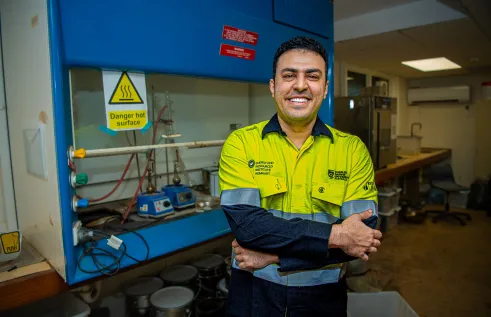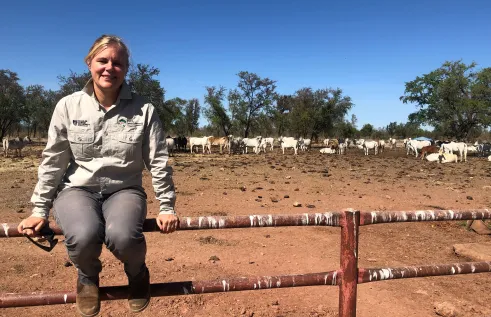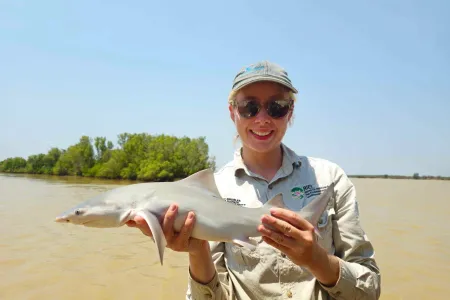News
Rare and threatened shark found in the Roper River for the first time
Charles Darwin University (CDU) researchers and First Nations Yugul Mangi Rangers have discovered a new population of a rare and threatened shark species in the Northern Territory’s Roper River.
The Speartooth Shark or Glyphis glyphis is a rare species of river shark that inhabits only a small number of tropical rivers and adjacent marine waters in northern Australia and southern Papua New Guinea.
The species is currently listed as Critically Endangered under Australia’s national environmental legislation, with a very small population and a restricted geographic range.
CDU PhD candidate Julia Constance, who is studying the movement ecology of the Speartooth Shark, said there is still much to learn about this rare species.
“The Speartooth Shark is quite elusive and occurs in very particular habitats. This can make them susceptible to changes in their environment,” Ms Constance said.
“We do know that female adults return to the same rivers they were born to pup, and that juveniles spend their early years in rivers, so it makes understanding their river habitats all the more important.”
The Speartooth Shark can grow to be over 2.5 metres in length and is one of only a handful of sharks around the world that occur in rivers.
They favour brackish and very muddy waters of large tidal rivers. The Roper River, which flows into the remote southwestern Gulf of Carpentaria, contains suitable Speartooth Shark habitat which had not previously been surveyed for the species.
To find out whether a population of Speartooth Sharks lived in the Roper River, researchers travelled to Port Roper in September and November last year.
“We mapped areas of the river for salinity levels that might point us to where the sharks could be before casting fishing lines in the river,” Ms Constance said.
“We caught 40 Speartooth Sharks including pups (newborn sharks), showing that this is a breeding population.”
“We were able to measure each shark, record their sex, assess their level of maturity, and take a genetic sample before releasing them,” she said.
The Roper River is a unique environment fed by ground water during the dry season and by runoff from surrounding catchments and rivers such as the Wilton River in the wet season. It is home to iconic barramundi, crocodiles, huge freshwater stingrays, and threatened sawfish.
Recently the aquifer which supplies the river was given the go ahead for a massive water extraction known as the Georgina Wiso allocation.
CDU’s Research Institute for the Environment and Livelihoods Senior Research Fellow Dr Peter Kyne said a greater understanding of this species’ environment is needed to learn what impact these changes will have.
“The results of our survey showed that the Speartooth Shark occur in a limited stretch of the downstream Roper River, and the population could decline rapidly in the face of threats, so we need to determine how these environmental changes impact them and come up with ways of managing them,” Dr Kyne said.
“If we don’t, then this unique and isolated population that call the Roper River home could be lost forever.”
Ms Constance worked closely with the Yugul Mangi Rangers from Ngukurr who joined the researchers on fieldwork to share knowledge of the river and help the survey efforts.
“The rangers will play an important part in helping to protect and preserve these species by helping with recreational fishing compliance and identifying any environmental changes,” Ms Constance said.
Yugul Mangi Ranger Davin Hall said this discovery is exciting for the Rangers.
“That’s good we found the Speartooth Shark in the Roper River because we didn’t know they lived in the muddy and brackish water here before,” said Mr Hall.
Related Articles

Where rubber meets the road: Old tyres are key to building tougher roads
Almost half of the Northern Territory’s worn-out tyres end up in landfills – with the rest exported interstate for recycling – but a study led by Charles Darwin University (CDU) is repurposing the discarded rubber to build stronger, sustainable roads that meet the NT’s unique needs.
Read more about Where rubber meets the road: Old tyres are key to building tougher roads
Social media subjecting Black women to radicalised digital policing
Influencers use oppression, manipulation and weaponisation to police Black women on social media, according to new research uncovering the entrenched nature of digital racism.
Read more about Social media subjecting Black women to radicalised digital policing
Moo-ving the boundaries: New research evaluates virtual fences for use on NT cattle stations
Cattle producers in Northern Australia face unique challenges when adapting tools like virtual fences on their properties, but new research from Charles Darwin University (CDU) is set to break down the barriers to this technology.
Read more about Moo-ving the boundaries: New research evaluates virtual fences for use on NT cattle stations
